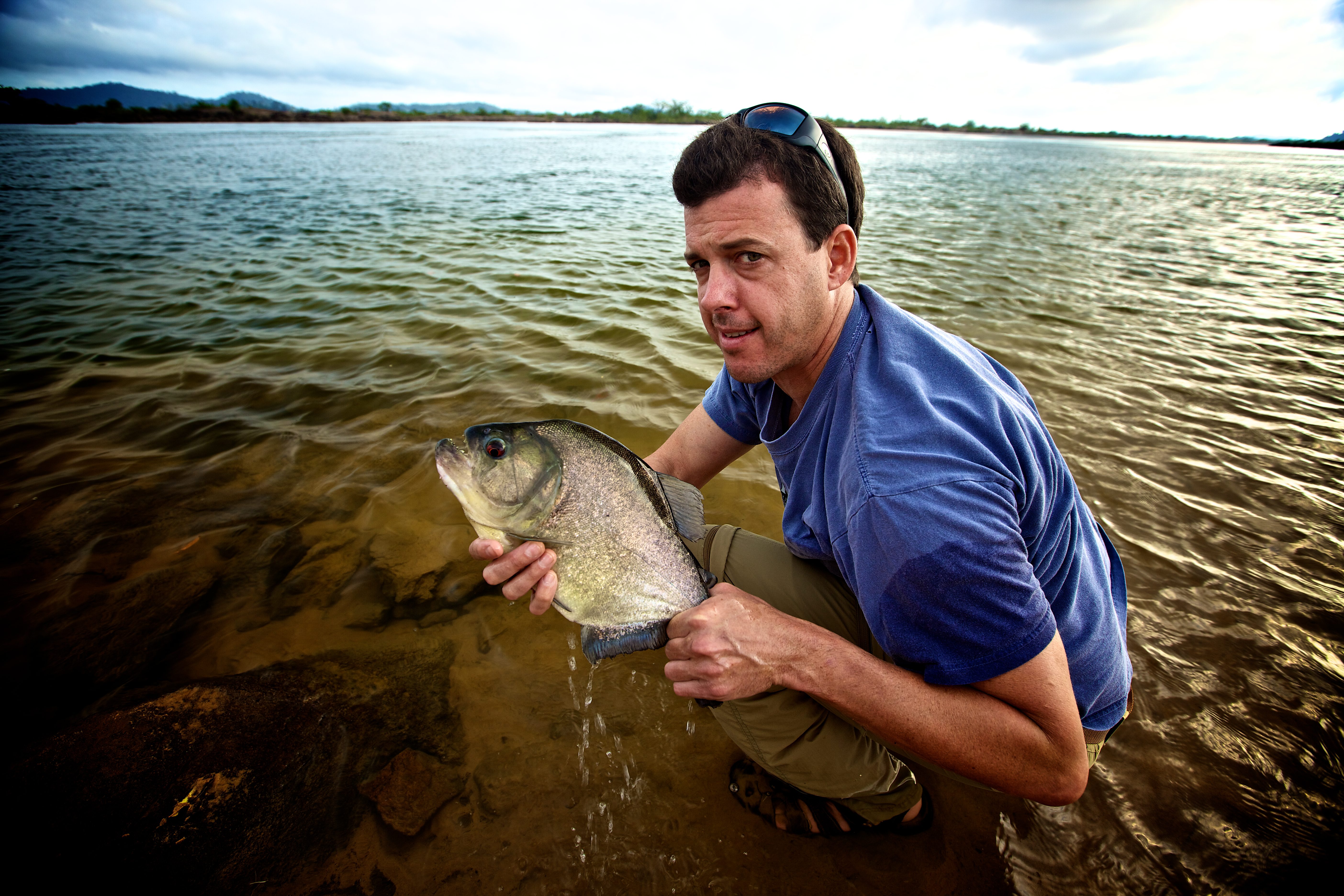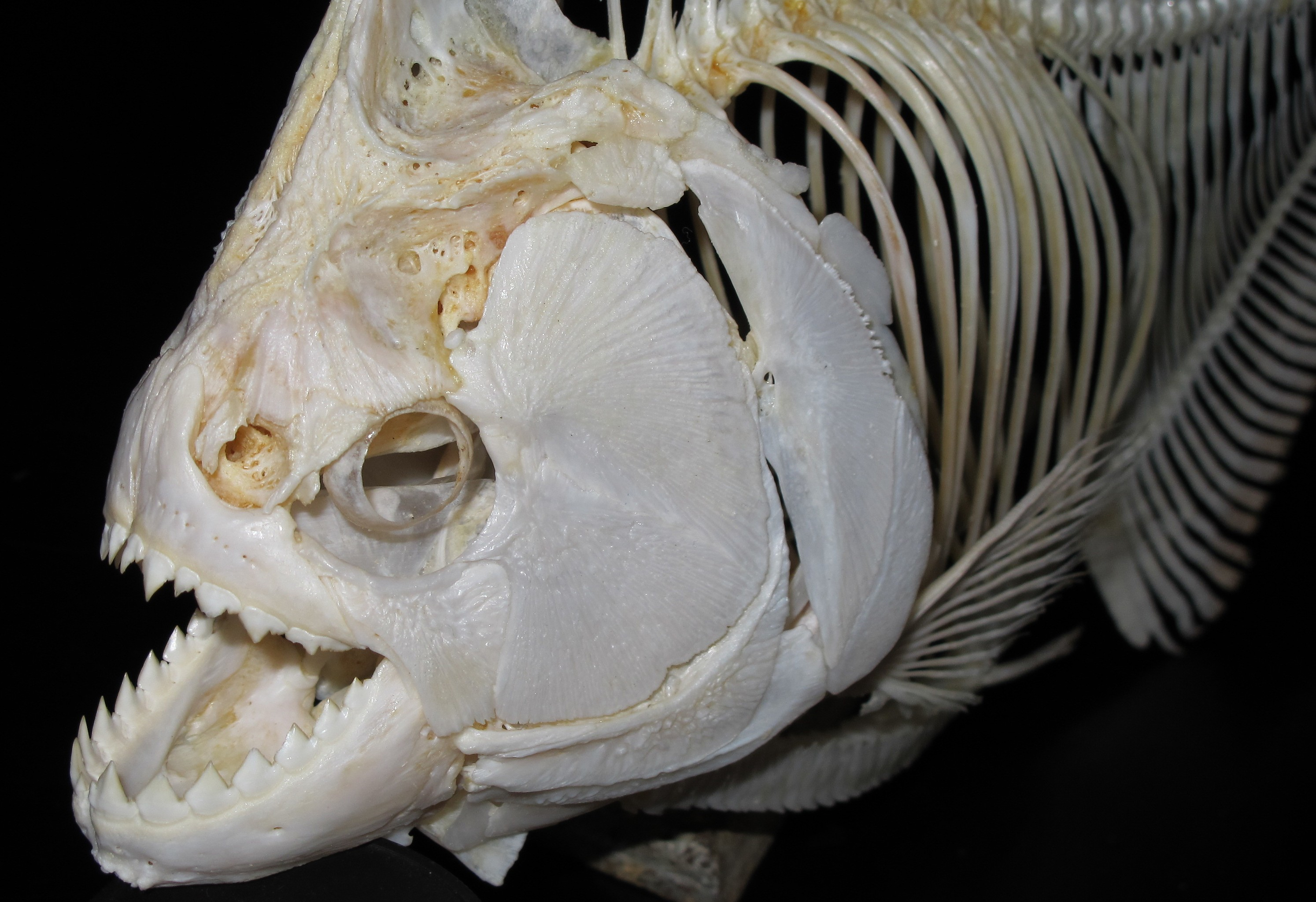
The ancient carnivorous mega-piranha, which lived between 6 million and 10 million years ago, packed a fearsome bite with a force that was up to 50 times its weight, finds a new study.
Pound for pound, the extinct predator beats out other mega-predators like an ancient, semi-truck-size shark called the Carcharodon megalodon.
"When you remove body size, the piranhas turn out to be the real champions," said Justin Grubich, study co-author and a marine biologist at the American University of Cairo. "They're the real champs in terms of jaw evolution."
The findings were detailed today (Dec. 20) in Nature's journal Scientific Reports.
Megapiranha paranensis, a 20- to 30-pound fish, lived in South America during the Miocene era, when the Amazon and Parana basin were one continuous habitat. During that time, all animals, from snakes to fish to crocodiles, were massive, Grubich said.
However, when the Andes Mountains rose, they separated the two basins, which scientists think caused mega-piranha to go extinct.
"You ended up with these isolated pockets, the habitat shrunk " Grubich told LiveScience. "There no longer were prey resources available to sustain its body size."
Sign up for the Live Science daily newsletter now
Get the world’s most fascinating discoveries delivered straight to your inbox.
To understand how fearsome mega-piranha's bite was, they looked at its smaller, but no less fearsome relatives, the modern-day black piranha. Though they weigh a mere 2 pounds (0.9 kg) on average, piranhas are notorious for their razor-sharp teeth, voracious hunger for meat, and their ability to swarm, and devour, prey much larger than them, such as the 6-foot-long (2.5 meters) arapaima fish. Piranhas have even been known to bite off the toes of unwary human beach-goers, Grubich said. [Image Gallery: Freaky Fish]
Grubich and his team captured piranhas from the Amazon and had them clamp down on a metal device that measured their bite force. The mighty jaws generated up to 72 pounds-force (320 Newtons), about 35 times its weight, he said. That powerful force allows the piranha to quickly bite whole chunks of flesh from animals as they pass by. "When we started measuring the bites in these relatively, diminutive small little fish we were just blown away by how strong their bites were," he said.

Next, the team modeled the mechanical forces generated in the jaw. They determined the black piranha's bite was so fearsome, because the jaw muscles connected the back of the jaw to the front, almost up to the front teeth, allowing the muscle force to be transferred more efficiently to the teeth, he said.
By extrapolating from the jaw structure and size of the black piranha to the mega-piranha, the team was able to reconstruct the bite of the extinct predator. They found the mega-piranha would have packed a bite between 279 and 1,067 pounds-force (1,240 and 4,749 Newtons). Depending on the mega-piranha's weight, that force would range from nine to 50 times its weight. Pound-for-pound, thats as if a supermodel had the bite of a T. rex.
As a follow-up study, the team now wants to study a relative of the black piranha, a fish called a pacu that cracks Brazil nuts in its jaws.
Follow LiveScience on Twitter @livescience. We're also on Facebook & Google+.

Tia is the managing editor and was previously a senior writer for Live Science. Her work has appeared in Scientific American, Wired.com and other outlets. She holds a master's degree in bioengineering from the University of Washington, a graduate certificate in science writing from UC Santa Cruz and a bachelor's degree in mechanical engineering from the University of Texas at Austin. Tia was part of a team at the Milwaukee Journal Sentinel that published the Empty Cradles series on preterm births, which won multiple awards, including the 2012 Casey Medal for Meritorious Journalism.










